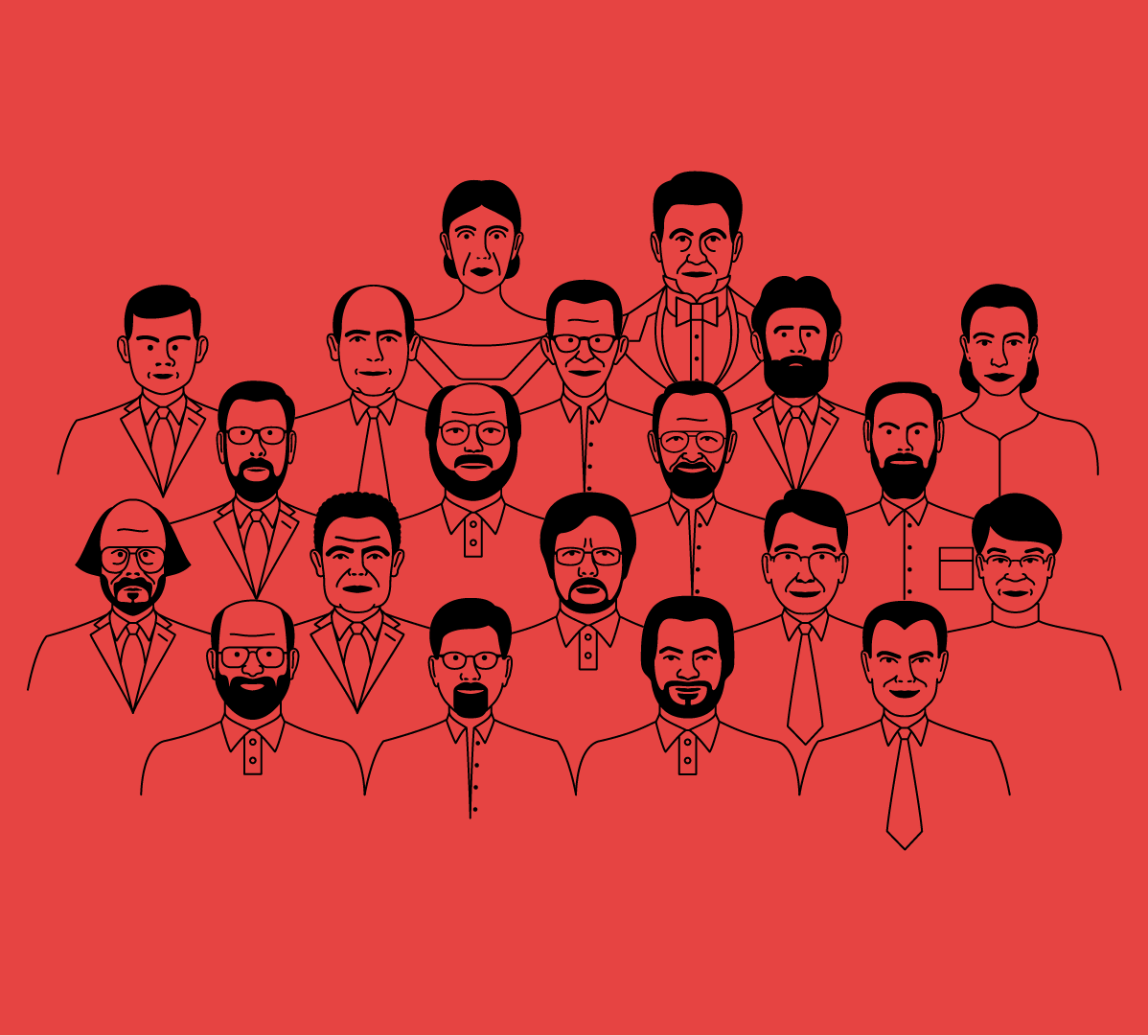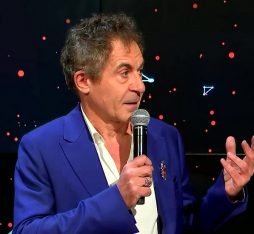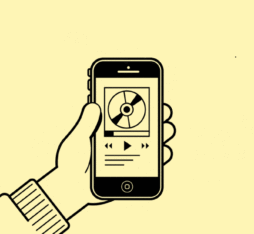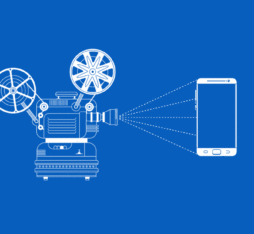

Ada Lovelace
In this very corseted Victorian period where everything related to science is reserved for men, the scientist Ada Lovelace is a curiosity in England. At 17, the daughter of the poet Lord Byron and a math intellectual, Annabella Milbank met Charles Babbage, eminent mathematician, professor at the University of Cambridge and forerunner of modern computers with its “analytical machine” with punch cards on the principle of the Jacquard loom. In 1842, Ada Lovelace, who oversaw the translation of an article on this project, enriches her work with seven notes, one of which, in particular, inaugurates the history of computer language. It presents the first algorithm that can be executed by a machine. In short, the ancestor of the computer program.
Alan Mathison Turing
Preferring science subjects to conventional teachings, the young British, Alan Turing will make this a real inclination mission after the untimely death of his great friend Christopher Morcom, passionate about mathematics. A pioneer of artificial intelligence and expert in cryptology (he participated in World War II in deciphering the German machine Enigma secret codes), in 1935 he made a decisive contribution to nascent computing with its calculating “universal” machine (Turing machine), which opened the way to many developments in the theory of algorithms. Persecuted for homosexuality, he was forced in 1952 to a chemical castration which made him commit a suicide.
John von Neumann
Precious child and engineering researcher, the work of a mathematician and physicist American of Hungarian origin John von Neumann had a major impact on many disciplines ranging from Quantum mechanics to functional analysis through the set theory, economics and computer science. In the latter area, it is the source of the first description of a computer program which is stored in its memory. This model of “recorded computer program,” used in almost all modern computers has been known since 1948 under the name of “Von Neumann architecture.” In 1958 he was the first to mention the concept of “technological singularity,” namely the breaking point where artificial intelligence would see the man outmoded by the machine.
John Backus
The early years of American John Backus have to reassure the poorest students. Accumulating bad grades and absences in high school, he tries without conviction to studies of chemistry and medicine. Finally, it is by chance that he discovers an aptitude for mathematics. His Columbia graduation, he was hired by IBM to work on the Selective Sequence Electronic Calculator (SSEC), one of the earliest computers. It will take three years to design Speedcoding first program to use a simple system of numbers in a floating point. But his most important contribution is creating the first real programming language, i.e. a system that allows to do without manual transcription, programs into machine language, a kind of translator, presented in a report entitled “Specifications for the IBM Mathematical Formula Translating System,” who gave birth in 1954 to Fortran, the first high-level programming language, closer to natural languages.
John McCarthy
Famous for the first statement in 1955 the concept of artificial intelligence (AI), American John McCarthy was the co-founder of the first laboratory of MIT AI and the founder of the University of Stanford. Creator with computer scientist Fernando Corbató, the timeshare technique, allowing several people to simultaneously use the same computer, originally in 1958, the programming language Lisp (List Processing), which will become the main language used in artificial intelligence. This high-level speech, in line with Fortran, inspired in various number of fields of derivatives such as Scheme, Clojure or Common Lisp. Based on symbols rather than numbers, it opened the way for more quality programming, hence its success in artificial intelligence and its application for pseudo-natural dialogues that some keywords are the common language understood by the system.
Grace Hopper
Mathematics doctor and flagship of an American Army, Grace Hopper have profoundly contributed to the evolution of programming languages. In 1951, she becomes the designer of the first compiler, the AO System, a program that transforms a programming language into another computer language, understandable by the machine. But it was at IBM, which she joined in 1957, that she worked on the design of a program that could be written in a similar language to English. Taking a lot of inspiration from Flow-Matic language, and developed, a committee of six manufacturers including IBM and three US government agencies, giving birth to the language Cobol (Common Business Oriented Language) in 1959. It is nicknamed “the mother of the Cobol language,” that computers understand English and non-mathematicians and companies are now engaged in programming.
Niklaus Wirth
Without any lack of humour, Nicklaus Wirth used to say that he was called by name in Europe and its value in America (“nickel’s worth”). This Swiss, multi-graduate in his native country as well as Canada and the United States, working to late 1960 to create a simple and effective language. Called Pascal in 1968, in homage to the French philosopher and mathematician Blaise Pascal, this programming language has the advantage of evolving (implantable easily on a wide variety of computers), universal (for all kinds of applications: science, management…), structured (facilitating the implementation of algorithms) and procedural (simpler and more natural). Originally used in the world of education and university research, Pascal language also had some success in industry and software publishing. The UCSD Pascal compiler, of the University of California, San Diego, was especially popularised by Apple II.
Kenneth Thompson
Computer prolix, American Kenneth Thompson, now 74 years working with Google, is the designer including language B, the precursor of C, the Beautiful computer, specialised in chess, dbm, AT&T’s database engine and Google’s Go language, known for its speed of execution. But he is also at the origin of operating multitasking systems and multiuser Unix in 1969. Popular in the academic world, the latter has been used by many start-ups in 1980 that have declined in different variants such as BSB (FreeBSD, NetBSD and OpenBSD), GNU/Linux, iOS and MacOS. Today, most of the used PC or mobile systems (with the exception of Windows NT) are based on the Unix kernel, including those marketed by Apple
Brian Kernighan and Denis Ritchie
Based on the B language designed by Kenneth Thompson, Denis Ritchie, computer scientist at Bell Labs, is developing a new version. In 1978, he co-wrote with Brian Kernighan “The Programming Language C”, a computer book that describes the language C, a model of technical documentation also known as the “K&R book” or “The White Book.” This new language, which owes its success to its age but also to its open format and simplicity, is the precursor of many other recent languages such as C ++, Java, C # and PHP.
Bjarne Stroustrup
The Dane Bjarne Stroustrup, now “managing director” in Morgan Stanley, is the creator in 1983 of one of the most popular programming languages: C ++. Employed at the Bell research lab of AT&T in 1980, it relies on the work done during his doctoral thesis on improving the language C to design a faster version than Simula and more suited to develop large software BCPL, two reference languages at the time. Standardised, C ++ is used today in a variety of environments and is particularly appreciated for the implementation of major programs.
Bertrand Meyer
Polytechnique and a graduate of Stanford, the French Bertrand Meyer, passed by EDF, is the architect of the Eiffel language, in 1986, an object-oriented programming language (computing paradigm based on software components called “objects,” representing a concept, idea or any entity of the physical world). Equipped with highly advanced and innovative features, Eiffel, inspired by the perfection of the famous tower, designed to avoid the shortcomings of other languages, causing bugs and waste of time. Initially used as an internal tool by Bertrand Meyer’s IT services company, Interactive Software Engineering (ISE), Eiffel will then be made public and widely promoted by its designer.
Guido van Rossum
Python is the story of a young Dutch computer scientist who, to occupy his Christmas vacation, delves into his computer to write a new script language. The purpose was to solve an interface problem on the Amoebia operating system, which he presented at the time at the Centrum voor Wiskunde en Informatica (CWI) in Amsterdam. Fan of the Monty Python’s Flying Circus series, Guido van Rossum decided to christen this Python project. Inspired by the ABC programming language, also developed at CWI, the first public version of Python, Guido van Rossum developed in his spare time, will be available in 1991. Since 2001, any change in language is overseen by the open-source Python Software Foundation (PSF), a non-profit association that has inducted Guido van Rossum, currently with Dropbox “Benevolent Dictator for Life.”
Linus Torvalds
Student at the University of Helsinki in the early 1990, the Finn Linus Torvalds will devour the documentation of the new Intel 80386 processor, based on the Minix operating system, simplified version of Unix developed by the American teacher Andrew Tanenbaum, he developed a kernel to boost the functionality of a personal computer. This will create the GNU/Linux system, known as the Linux (GNU is a system designed by the American programmer Richard Stellman and remained until 1991 in the experimental stage). The specificity of Linux is to be a free operating system, opening all its use, study, modification and duplication for distribution.
Yukihiro Matsumoto
“Self-taught programmer,” according to him, Yukihiro Matsumoto, said Matz, is an avid fan of free software. Inspired by Smaltalk languages and Lisp but also by Ada, Eiffel and Perl, he develops in the early 1990s Ruby, a new programming language under an open licence that favours simplicity and productivity. Easy access, Ruby lends itself to teamwork and proves to be an all-terrain language. For the last ten years, it has become very popular and is animated by an increasingly important community with even learning methods for children like Ruby for Kids.
James Gosling and Patrick Naughton
Once again, everything began with dissatisfaction, that in this case the American engineer of Sun Microsystems, Patrick Naughton, facing use of C ++. Backed by the Canadian computer including James Gosling, soon abandoned the idea of simply improve C ++. The team instead decided to develop a new language quickly and refocus it on the web. One of the strengths of Java is to be very easily portable on several operating systems such as Unix, Windows, Mac OS or GNU/Linux. For the record, the name “Java,” comes from coffee (“Java” in American slang), a drink widely consumed by the designers of the new language. His logo is nothing but a cup of steaming coffee.
Ross Ihaka and Robert Gentleman
R is not the 18th letter of the alphabet, but also since 2000 “the” community of programming language of statisticians, engineers and other data analysts. Its users often used to say that “R makes complicated things easy, and complicates simple things.” But its power, its versatility and its side “open-source” have made it a very popular software, now used by the largest companies: Google uses it to calculate the ROI of advertising campaigns and Ford to improve the design of its vehicles. The project was initiated in 1993 at the University of Auckland (New Zealand) by two statisticians, New Zealander Ross Ihaka and Canadian Robert Gentleman, to facilitate data analysis work of their first-year students. A tool they baptise R, referring to the initials of their first names, and that they will give free access to that “everyone brings his stone to the building.”
Chris Lattner
After studying computer science in Oregon and Illinois, American Chris Lattner joined Apple in 2005 at the age of 27 years, to develop the LLVM project (a compiler infrastructure). In 2010, he launched the development of a compiled programming language that will be called Swift; the first public version will be available in 2014. After open source in 2015, Swift was quickly adopted by developers in particular for its simplicity. He joined in 2017 as Reported in “Top 10” of the most popular languages according to the TIOBE ranking; he confirms its status as successor to Objective-C language that had ensured the development of iOS and MacOS applications. As for the experience of Chris Lattner at Tesla, which he joined in January 2017 to lead Autopilot, the autopilot system by the vehicle manufacturer, it was a short-term job: in June he left the company.










